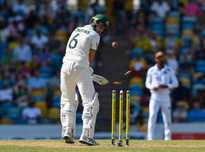The European Space Agency (ESA) has shared breathtaking images of volcanoes as seen from space, highlighting Earth’s fiery landscapes from Italy’s Mount Vesuvius to Indonesia’s Krakatoa. These photographs, taken by astronauts aboard the International Space Station (ISS), serve as a powerful reminder of how active and dynamic our planet remains. The images were released on August 24, a date linked to the catastrophic eruption of Vesuvius in 79 AD that buried Pompeii and Herculaneum. By capturing these natural giants from orbit, ESA shows not just their beauty but also their immense power and unpredictability.
NASA and ESA highlight Earth’s active volcanoes
ESA, in collaboration with NASA astronauts, captured volcanoes across different continents, showing everything from snow-capped peaks to fiery craters. Among the highlights is Mount Vesuvius in Italy, one of the world’s most dangerous volcanoes due to its proximity to Naples. The images also feature Russia’s Klyuchevskoy, New Zealand’s Mount Taranaki, and Indonesia’s Krakatoa — all known for their history of dramatic eruptions. Each snapshot reveals the raw power of nature and the potential risks these volcanoes pose to nearby populations.
Remembering Mount Vesuvius’ deadly eruption
The release of these images coincided with the anniversary of the 79 AD eruption of Mount Vesuvius, one of history’s most infamous natural disasters. The eruption buried entire Roman cities under ash and lava, preserving them for centuries. Although historians debate the exact date, the event remains a symbol of the devastating force of volcanoes. Vesuvius has erupted more than 50 times since, with its last eruption in 1944, and remains under close scientific monitoring due to its threat to millions living nearby.
Capturing volcanoes from orbit
Astronauts aboard the ISS regularly photograph Earth’s geological features to help scientists track changes over time. By studying volcanic plumes, lava flows, and crater formations from space, researchers gain valuable insights into volcanic behavior and the risks they pose. Beyond science, the images also showcase the awe-inspiring beauty of Earth as seen from orbit — fiery mountains surrounded by seas, cities, and forests, reminding us that the planet is constantly alive and reshaping itself.
 Patience Urged for Australia's Rebuilt Top Order Amidst Test Transition
Patience Urged for Australia's Rebuilt Top Order Amidst Test Transition
 Kohli's Composure Under Pressure: Sharma Credits Mental Fortitude for Key Innings
Kohli's Composure Under Pressure: Sharma Credits Mental Fortitude for Key Innings
 West Indies Coach Daren Sammy Fined, Reprimanded for Umpire Criticism
West Indies Coach Daren Sammy Fined, Reprimanded for Umpire Criticism
 Bangladesh Coach Phil Simmons Leaves Sri Lanka Tour for Medical Check-up in London
Bangladesh Coach Phil Simmons Leaves Sri Lanka Tour for Medical Check-up in London
 Rishabh Pant: Greg Chappell Hails India Star as Cricket Revolutionary
Rishabh Pant: Greg Chappell Hails India Star as Cricket Revolutionary
 Pant's Fearless Hitting vs. England Draws Adam Gilchrist Comparisons From Greg Chappell
Pant's Fearless Hitting vs. England Draws Adam Gilchrist Comparisons From Greg Chappell
 IND vs ENG, 2nd Test: Rishabh Pant's Composed Reply Silences Harry Brook's Sledge About Fastest Century
IND vs ENG, 2nd Test: Rishabh Pant's Composed Reply Silences Harry Brook's Sledge About Fastest Century
 Neeraj Chopra Tips Jasprit Bumrah for Javelin Success, Cites Cricketer's Strength and Fitness
Neeraj Chopra Tips Jasprit Bumrah for Javelin Success, Cites Cricketer's Strength and Fitness
 Gambhir Backs India's Lower Order Despite Headingley Test Collapse, Cites Costly Dropped Catches
Gambhir Backs India's Lower Order Despite Headingley Test Collapse, Cites Costly Dropped Catches
 Carlsen on Gukesh's World Champion Status: 'Impressing Me Still a Question'
Carlsen on Gukesh's World Champion Status: 'Impressing Me Still a Question'